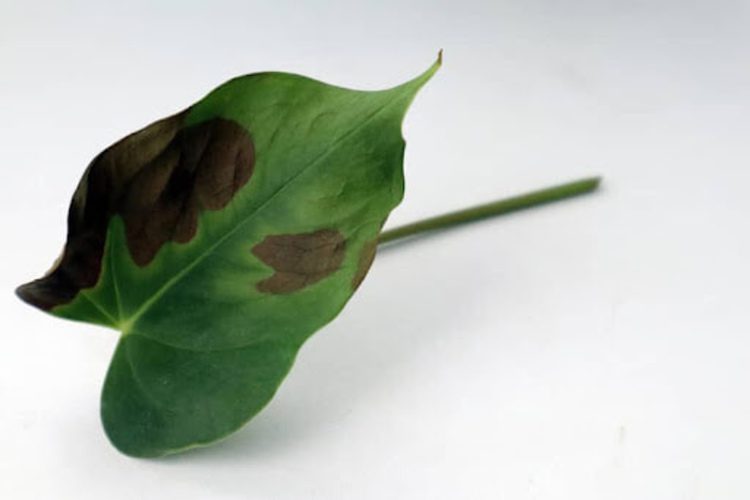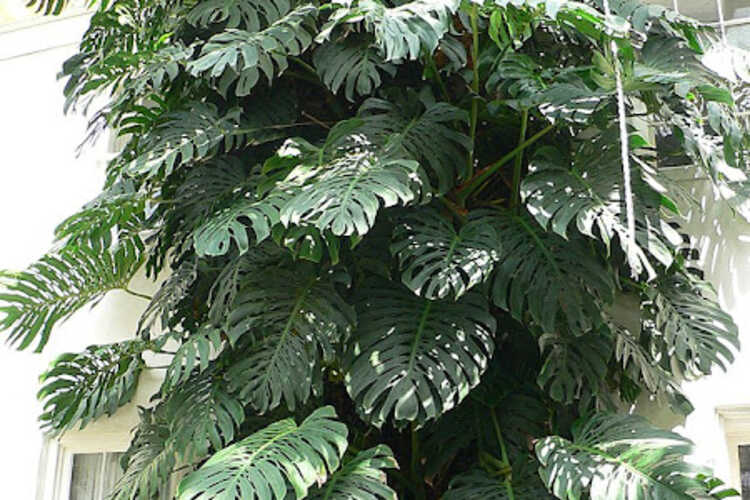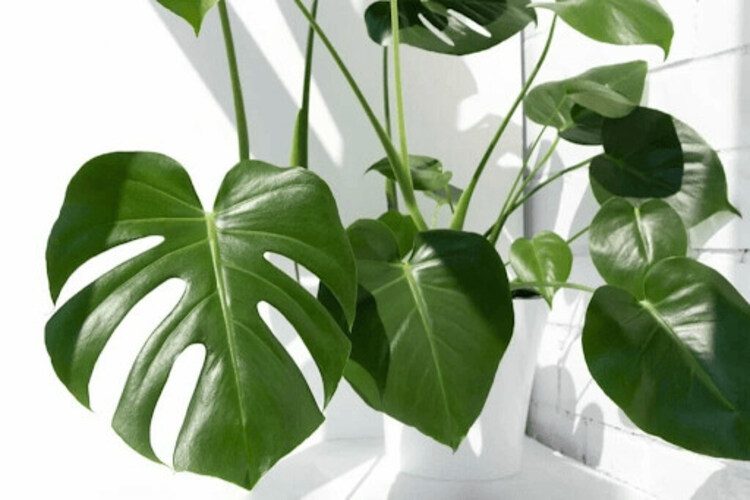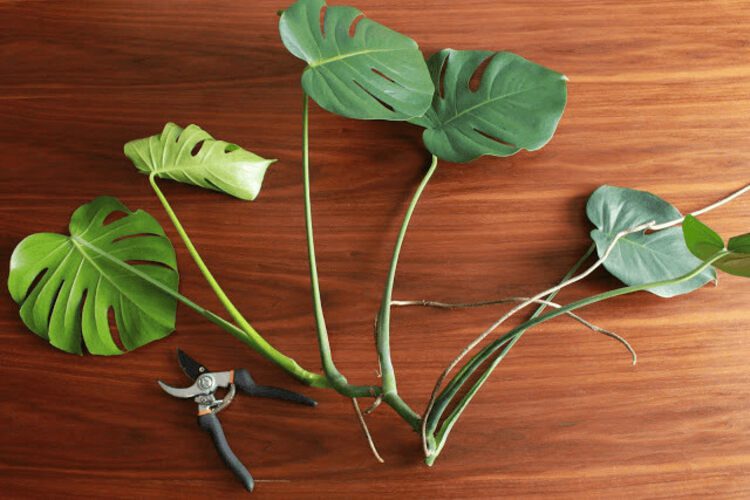Monstera Repotting Shock: 7 Signs Of A Shocked Plant
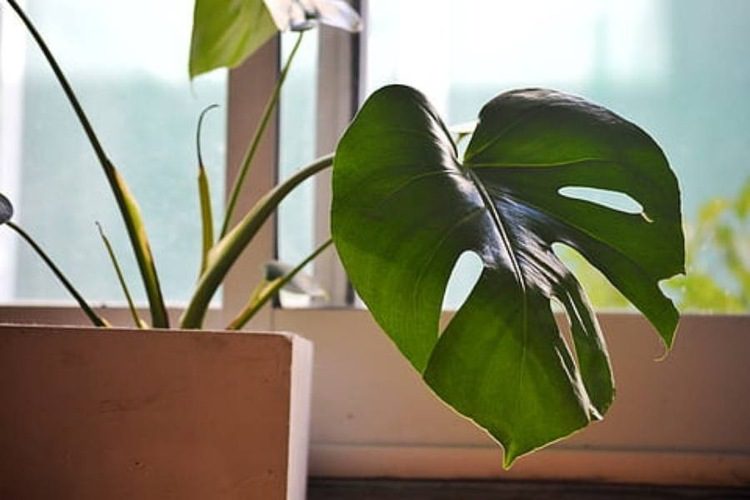
What is Monstera repotting shock, and how does the shock happen to your houseplant? What should you do to solve this problem? Repotting is a process to provide more space and nutrients for the plant’s growth. However, the sudden change in the environment will accidentally make the Monstera plant suffer.
We will explain the causes of this problem in detail. You can also learn some tips to relieve it. Let’s join us!
What Are The Signs Of Monstera Repotting Shock?
The common sign that Monstera plants are shocked is that their leaves wilt and have a lifeless look. This is a problem of Monstera plants because they do not like to be disturbed. Repotting can be a stressful experience for plants, and it can take some time for them to adjust to their new surroundings. The Monstera plant does not die after repotting. It’s also an excellent time to check on your Monstera’s health and renew its soil.
Transplanting, on the other hand, is a stressful practise. After this treatment, your houseplant may experience a shock. If your plants suffer from transplant shock, you can take steps to help them recover and minimise the symptoms. You can define the repotting shock by the signs your plants show after this treatment, such as:
Transplant shock
In a good state, houseplants like Monstera deliciosa can proliferate. As a result, you must transfer it from a small container to a larger container. When you repot your plant, it may get startled because of the rapid change in its habitat. In this scenario, the Monstera plant withering after repotting is normal.
The repotted plant is now in shock, maybe due to improper treatment. Examine your plant’s growth rate as well. Every two to three years, this pot plant will need another pot. When you relocate a fast-growing plant, you may accidentally injure the root. Repotting might deplete its stamina and cause it to droop.
Temperature change
These tropical plants thrive in temperatures ranging from 64 to 86 °F. The temperature outside of this range may not be ideal for the plants to grow. After repotting, you may assume they need sunshine and place them directly in the sun or near a hot side. However, excessive heat can burn the leaves, causing them to wilt.
Another reason for the Monstera’s drooping is exposure to too much frost. The leaves may become discoloured if temperatures drop too low.
Root issue
When repotting, a new pot’s space should fit your houseplant. Otherwise, the large container traps too much water in the soil, causing root rot. This is especially true if the plant is root-bound, meaning that the roots have filled the pot and are circling around. Root-bound plants are more susceptible to root rot because the roots do not have enough space to grow and breathe.
Because the water drains through the soil, you may not notice this issue just by looking at the topsoil. On the other hand, the middle layer soaks up moisture and does not dry as quickly as the upper layer.
Dry soil
Another major cause of drooping Monsteras is dry soil. You can check it by pushing your finger through the soil. The plant is thirsty if you can feel the dry soil after the first two inches. The species is native to the tropical forests of Central America and the southern states of Mexico. It requires a humid habitat to thrive. As a result, the dry, hard soil is not ideal for them. After transplanting the plants, do not let them dry out. They may wilt and their leaves curl as a result of the absence of moisture.
Over-fertilizing
Monstera plants may grow to be pretty tall in their habitat. However, when grown in pots, their height becomes limited. You must provide adequate nutrients to ensure that the houseplants develop to their full potential.
On the other hand, adding too much fertiliser too regularly might generate a buildup in the soil mixture, which can cause root toxicity. If the roots stop working and the plant can’t get the nutrients and water it needs, it will droop. Additionally, excessive fertiliser can worsen the soil’s toxicity. The root tips cannot work effectively, leading the plant to fall.
Improper lighting
Monsteras, which come from tropical regions, thrive in indirect sunlight. Exposing them to direct sunlight encourages the growth of dark spots on the foliage and limping.
If your plant is subjected to low light, it will become stressed, have few leaves, and be more susceptible to wilting and languishing. As you can see, your plant’s health and development also depend on the light you supply them.
Infestation
Illnesses and pests are pretty common in this species. Some of the most severe pests include spider mites and mealybugs.
A constant checkup is the first and most important line of defence. A significant bug infestation can cause the entire plant to lose lots of nutrients and water because of the destruction of the leaves. Fungal and bacterial infections can also penetrate the leaves through the holes. As a result of these diseases, the foliage will fall.
Here are some types of pests that your plants may be suffering from. Check the symptoms to rescue the plants in time.
- Scale insects
Scale creates yellow or white spots on leaves, which might fall off due to the disease.
- Spider mites
The leaves may look sticky and gritty, particularly at the bottom, where they congregate.
- Thrips
Thrips look like little white footballs and grow on the underside of the leaf, forming holes afterwards.
- Fungus gnats
When you water the plants, you’ll probably notice fungus gnats creeping on the topsoil or flying out from the pot, leaving a black or white powdery residue.
How To Repot Monstera?
Every few years, you should repot your houseplant to maintain adequate soil nutrition and space for the fast-growing plant.
The question is, how do I repot the plant correctly to minimise the risk of shock? There are some steps to follow:
Choose the right location
You can keep your houseplant in the dining room, living room, or bedroom. It thrives in indirect illumination but struggles in direct sunlight. As a result, a place near the west, south, or east-facing windows is perfect. To avoid leaf burn, try to avoid direct sunlight.
Choose potting soil
Monsteras thrive in organic potting soil mixes that are light and airy. These plants can’t thrive in the moist clay soil of your backyard. To capture air pockets, Monstera potting soil usually contains coco coir, lava rock, peat, perlite, and bark. These elements support soil aeration.
Monstera plants grow best in moist, well-draining soil. They like a slightly acidic pH level of 5.5 to 6.5 in their soil mix. To maximise the plant’s growth, you should mix one part coco coir or peat moss with one part perlite. Then, add four parts of bark fines to the mixture.
Choose the pot
Monsteras require a pot that drains well. It should also be large and heavy enough to support the huge leaves when the plant grows. You may want to try unglazed stoneware and ceramic containers, such as classic terra cotta. These pots come with porous and breathable sides. Their weight is another plus.
For a young Monstera, you should choose a pot that is a few inches wider than the old planting pot. It’s best to go one size larger in this case. For example, if the old pot is six inches, the new one should be eight inches. It will be simpler for your plant to adapt to a new habitat that isn’t substantially bigger than the previous one. In the same way, the plant can become more prominent thanks to this slight change.
Another thing to consider is the size of your houseplant. The pot should be as wide as the plant after root pruning. Also, make sure that the container you chose is deep enough to fit a support pole if you wish to stake your plant. Transparent pots are perfect because you can see your plants’ dirt and roots. They also make it simple to keep track of root conditions and identify rot. Moreover, transparent containers help you tell when the plant is rootbound and needs a new pot.
On the other hand, terracotta pots may be a great cost-effective combination between aesthetics and price. They are often less costly than other ceramic containers and are available at most garden centres and hardware stores.
Water frequently
Water your houseplant once a week so that the soil has time to dry up. Monstera only requires one or two cups of water for each watering. When you’re exposed to intense light, your eyes are more likely to sweat than when you face dim light. So, instead of watering your houseplant at night, irrigate it in the morning. If you water it late at night, the excess water will gradually evaporate, making the soil moist for a long time.
Fertilize
Do not fertilise your Monstera for the first few weeks after repotting. The potting soil already has nutrients. It can also assist the plant in adapting to its new environment before it is overwhelmed with nutrients. When you fertilise, choose a fertiliser that is high in nitrogen. Feed Monstera once a month using liquid fertiliser when they are actively growing in the spring. Plant food is a fantastic option for development.
Trim and clean regularly
This Swiss cheese plant may overwhelm its surroundings. In its native habitat, it may reach a height of 10 feet. The plant grows too tall in the house and reacts well to trimming. Any cutting can start a new bush.
It’s necessary to prune the houseplant when it is dormant and before the growing phase starts. The best time for pruning is in early spring, when the plant’s dormancy begins. During this time, the days are longer and the temperature rises. Your houseplant can heal the damaged parts after pruning.
Conclusion
Repotting involves changes in temperature, humidity, and space. If your houseplant can’t adapt to these adjustments, it will become weaker. In this case, check for the primary causes. Then, you can find a solution to rescue your plant. Hopefully, the guide we have shared can help you deal with your Monstera’s repotting problems. If you need any further information about gardening, please feel free to ask.




